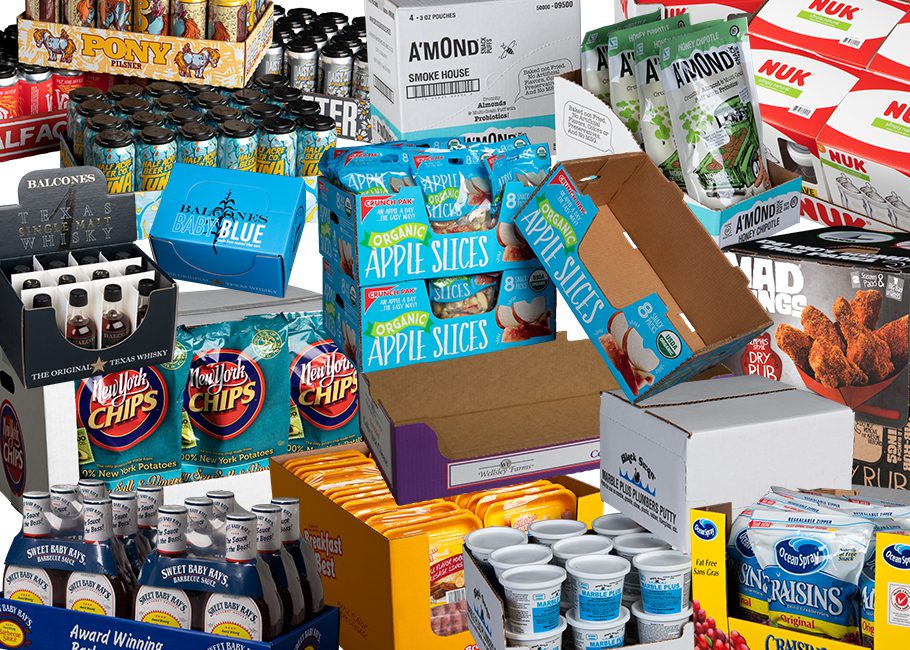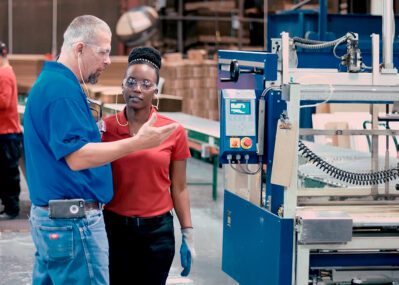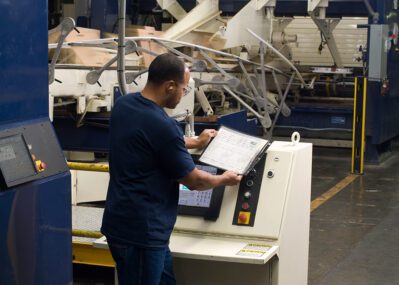
Product packaging is evolving fast. The explosion of e-commerce, the lasting effects of a global pandemic and a stressed economy have forced brick-and-mortar merchandisers to demand more from suppliers to help get products into consumers’ carts and out the doors.
Luckily for suppliers, retail-ready packaging, or shelf-ready packaging, offers more influence over how their products appear at retail and more:
- Merchandise is shipped in containers that ultimately end up on the shelf and sales floor, reducing packaging costs.
- The entire supply chain is accelerated, and products are restocked in bulk. This means fewer empty shelves while relieving stress created by retail labor shortages.
- Retail-ready packaging reduces waste, especially when recyclable and sustainable corrugated packaging is used.
Retail-ready packaging isn’t new. Walmart, the largest brick-and-mortar retailer in the world, introduced retail- and shelf-ready packaging to suppliers more than a decade ago. Club store retailers also drove demand, making it easy to stock sales floors and meet high demand. It wasn’t long before other merchandisers noticed the benefits of retail-ready packaging and began requesting it from suppliers.
Why should suppliers actively seek retail-ready packaging solutions?
The answer is simple. It’s a trifecta: a win-win-win for everyone in the supply chain and the buyer’s journey, resulting in more sales.
- Retail-ready packaging helps merchandisers stock products with fewer touches. This efficient packaging solution reduces costs for brick-and-mortar retailers to remain competitive with e-commerce. More merchandisers are encouraging retail-ready packaging, so smaller staffs can focus on making customer experiences top priority. For the supplier, it means faster stock turns and replenishment.
- Consumers rely on shelf-ready packaging to shop quickly and efficiently. Products are easier to find, brand stories can be printed on the displays and product access is neater and more appealing.
- Retail-ready packaging solutions help meet sustainability goals. Products move from the manufacturer to retail shelves in the same container, from start to finish. That’s less packaging materials overall, reducing waste.
“Retail-ready packaging is shelf ready and combines two disciplines—the protective properties of a well-designed corrugated shipping container with the attention-getting properties of a display,” explains Carmine Bucalo, Director of Creative Services at PCA.
How does retail-ready packaging work for you?
Retail-ready packaging comes in many styles and custom configurations to fit most any merchandiser’s requirements.
- Food and beverage, the largest category using retail-ready packaging (85% according to a Freedonia study), heavily relies on shelf-ready packaging boxes and free-standing pop-up displays in highly shopped perimeters of grocery, supercenter and club store channels.
- Discount retailers frequently request shelf-ready packaging boxes for both aisle shelves and more visible end cap displays.
- Club store channels utilize retail-ready pallet packaging constructed from corrugated products to move products directly to the sales floor and meet high demand and volume sales.
Corrugated is the preferred material selected for retail-ready packaging and is a cost- effective, sustainable choice. Some suppliers select plastic for reusable displays, but the ease of recycling corrugated materials, along with its sustainable sourcing methods and minimal handling needs, have made it the retail-ready packaging solution of choice.
Here are some simple guidelines for retail-ready packaging:
It takes careful planning to ensure products have the right retail-ready packaging solution to help meet the retailer’s needs and ultimately sell more products. But the effort is worth it. Get it right and your products are likely to be rewarded with preferred placement, to remain stocked and to create more engagement with target consumers.
Bucalo says PCA’s design team is experienced in creating retail-ready packaging solutions to meet both customer and retailer needs. To keep it simple, he always starts with the “Five Easies,” which were introduced by Walmart, and he combines them with PCA’s expertise in creating cost-effective, engaging state-of-the-art packaging design. The Five Easies include:
- Easy to IDENTIFY—Packaging containers are marked and easy to find in the warehouse and stockroom. On the sales floor, they are well-designed so that consumers understand how the product fits their needs.
- Easy to OPEN—This takes special design skills. Products must include clean perforations that can be easily opened in the store and leave a smooth and easy-to-shop opening. Retail-ready packaging should have clear and simple instructions for opening containers without a box cutter or knife.
- Easy to REPLENISH/STOCK—Retail-ready packaging increases efficiency in restocking, often taking just a few seconds, as all products are contained within one unit. These displays can be placed on the shelf or sales floor in a single step and have become essential in addressing retail labor shortages.
- Easy to SHOP—Retail-ready packaging solutions must be designed through the consumer’s eyes. Shoppers should be able to easily identify products, efficiently remove the goods and emotionally connect with the brand.
- Easy to RECYCLE—Retail- and shelf-ready packaging is designed to use less materials and provide enough protection to minimize damage while in transit. It should be easy to handle throughout the process, including preparing for recycling.
PCA has a detailed library of retail merchandising guidelines, including retail-ready and shelf-ready packaging requirements. They ensure that your products are received and properly displayed at retail.
Retail-ready packaging delivers results.
PCA has created retail-ready packaging solutions for just about every product or channel category, and we are increasing our efforts in the grocery space to meet high demand.
A study conducted by Freedonia predicted that retail-ready packaging demand would increase by 3.2% annually and reach $1.8 billion this year. That research was released before the pandemic, and since then demand has increased significantly. A more recent Freedonia analysis (conducted in 2021) projects retail-ready packaging will grow quickest in the fresh produce category, with the strongest growth anticipated in the $3.5 billion fresh vegetable and salad packaging market.*
Jacob Cowley, Vice President of Operations at Indulgent Foods, credits shelf-ready packaging as a reliable tool to secure more shelf space in the retail environment, especially when launching new products.
“It’s very competitive, and you have to create attention and make it easy for the retailer,” Cowley says. “The display shipper boxes (shelf-ready packaging) PCA produces for us have been instrumental in familiarizing customers with our products. This has resulted in greater visibility for our brand and has also helped grow our customer base.”
Retail-ready packaging is uniquely one of those rare triple wins—for the retailer, the supplier and most importantly, the consumer.
Interested in learning more? Fill out the form below, and we’ll have one of our local packaging experts reach out to you.
*Source: N.V. Business Publishers Corp, Board Converting News, Study: Retail-Ready Boxes Fasting Growing Produce Packaging Type


